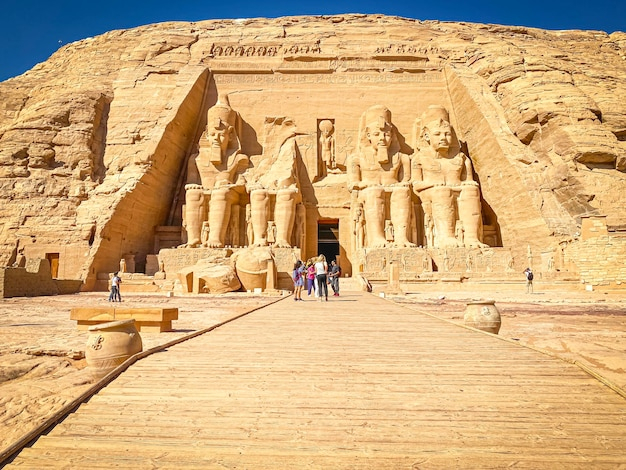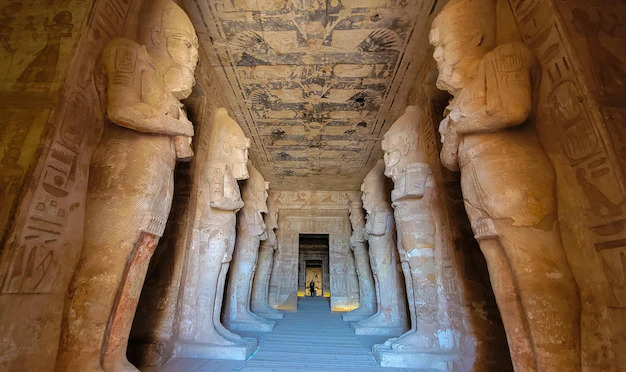Abu Simbel
Abu Simbel, location of two temples erected by Egyptian king Ramses II (reigned 1279–13 BCE), currently in Aswn mufaah (governorate), southern Egypt. Historically, the region was on Pharaonic Egypt's southern border, facing Nubia. The four huge sculptures of Ramses in front of the main temple are magnificent specimens of ancient Egyptian art. The temples were saved from the rising waters of the Nile River caused by the construction of the Aswan High Dam in the 1960s by a sophisticated technical accomplishment.
The temples were discovered in 1813 by the Swiss scholar Johann Ludwig Burckhardt, who carved them out of a sandstone cliff on the west bank of the Nile, south of Korosko (today Kurusk). Giovanni Battista Belzoni, an early Egyptologist, was the first to investigate them in 1817.
The ancient site of Abu Simbel, which has two temples erected by Egyptian King Ramses II (reigned 1279–13 BCE), is presently located in Aswn mufaah (governorate), southern Egypt. The great temple is devoted to the sun gods Amon-Re and Re-Horakhte, and the smaller temple is dedicated to Nefertari for the worship of the goddess Hathor.
When the reservoir generated by the neighboring Aswan High Dam threatened to flood Abu Simbel in the mid-20th century, UNESCO and the Egyptian government funded an effort to conserve the monument. UNESCO launched an information and fundraising drive in 1959. Between 1963 and 1968, a crew and an international team of engineers and scientists took away the top of the cliff and entirely demolished both temples, rebuilding them on high land more than 200 feet (60 metres) above their old location, using donations from more than 50 countries. In all, 16,000 blocks were shifted. Abu Simbel, Philae, and other adjacent ruins were listed as a UNESCO World Heritage site in 1979.
Location: Nubia












